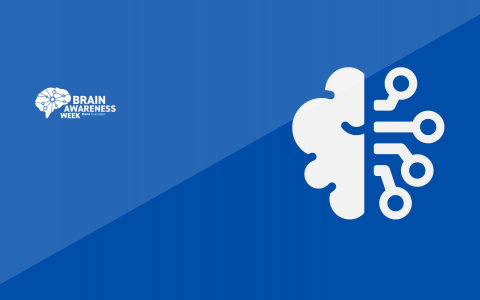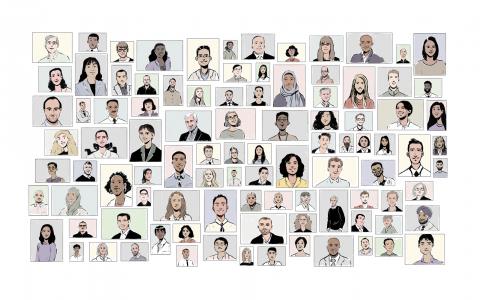
Exploring the four realms of existence
An interview with Professor Joseph LeDoux, New York University, conducted by April Cashin-Garbutt
As Descartes famously wrote, “I think, therefore I am.” These words assert that there is an entity doing the thinking and we often feel that this “self” is somehow distinct from our physical being. While modern science has largely eliminated this mind-body dualism, we still tend to imagine our minds as separate from our bodies. Could this idea be creating a barrier to discovery and understanding?
In a recent SWC seminar, Professor Joseph LeDoux proposed a new framework for characterising our existence, made up of four different realms – biological, neurobiological, cognitive and conscious. In this Q&A, he explains how the four realms relate to each other and the implications for neuroscience and the higher-order theory of consciousness.
Why do you think people tend to imagine their minds as separate from their bodies?
We live our lives in our minds. Williams James pointed out that people tend to use personal pronouns when talking about their conscious mind, but turn to impersonal designations when talking about their body. The legal system also supports this divide by holding people responsible for deliberate, conscious actions, but sometimes acquitting for behaviours that seem to have been produced without conscious intent—as in the temporary insanity defense.
Some say that as science advances we will get rid of quaint folk psychology notions about the mind. But even though we can change the way we talk about mental processes and give these scientific labels, the mind will continue to construct its own sense of what the label means, and the scientific labels become new names for folk psychological conceptions of the mind.
How does the notion of the mind as being distinct from the physical body create a barrier to discovery and understanding?
Barriers arise when we think of the mental as something different from the physical. For example, Descartes thought of the body as physical but of the mind as consisting of some non-physical substance. This dualism still persists in some corners of philosophy. But most scientists who study consciousness today agree that because the mind is a function of the brain, and the brain is part of the body, the mind is physical.
The sense we have that ‘the mental’ in us is separate from the ‘the physical’ is an illusion that results from the fact that we have mental access to our thoughts and feelings, but we don’t have access to the underlying neural processes that generate those. Part of the problem is that mental processes can be conscious or not conscious. Hence, just because something is unconscious does not mean it is not mental. Karl Lashley put it this way. He said that every conscious experience is preceded by non-conscious, or better put, pre-conscious, processing. Some but not all pre-conscious processing crosses the threshold and becomes conscious. The rest remains unconscious like the vast remainder of brain activity is unconscious. We only know about these truly unconscious processes when we notice their consequences in overt behaviour (withdrawing your hand from a hot stove or freezing to a snake) or internal body responses (a stomach ache or rapid heartbeat).
Can you please explain your new framework, the four realms of existence? How do the four realms – biological, neurobiological, cognitive and conscious – relate to each other?
A human being can be characterised as a composite of four fundamental, parallel, entwined realms of existence that reflect our evolutionary past and account for our present ways of being. All four are, deep down, biological. But the neurobiological realm transcends the mere biological, the cognitive transcends the mere neurobiological, and the conscious transcends the mere cognitive. They coalesce as an ensemble of being. Each realm anatomically permeates and physiologically enables the level above it, and enhances the survival potential of the one below.
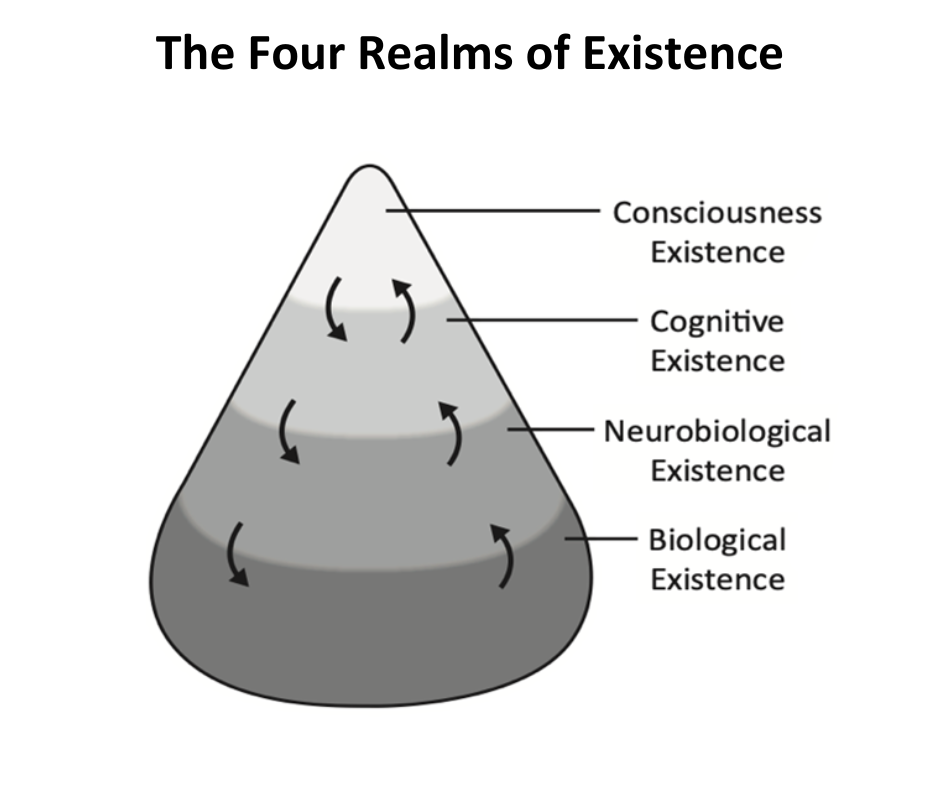
The biological realm is concerned with bodily functions that keep us alive such as metabolism, replication of cells and our ability to reproduce. All organisms are biological, but some also have a nervous system. These are neurobiological organisms.
A nervous system provides tremendous efficiency in taking in stimuli and controlling responses. The first animals with nervous systems arrived about seven-hundred million years ago (ancestors of jellyfish). Their diffuse nervous system provided previously unparalleled degrees of behavioural control and some limited abilities to learn from experience. Some seventy-million years later, worms with bilateral bodies and a brain came onto the scene. All vertebrate and many invertebrates evolved from them. With centralized control of body responses, bilateral animals were able to control body responses in more efficient and precise ways. Neurobiological realm responses are automatic—no thought is involved.
Some examples of behaviours expressed via mindless neurobiological control include reflexes, innate motor patterns, and associatively leaned conditioned responses. One kind of associative learning is Pavlovian conditioning in which an association is formed between two stimuli—a reinforcer and a cue that predicts it. By contrast, some neurobiological beings also learn instrumental habits. These involve stimulus-response associative learning in which the reinforcement strengthens the stimulus-response relationship. Once well-established the behaviour is automatically rigidly performed to obtain the reinforcer when in the presence of the stimulus.
Some neurobiological organisms also have the ability to control behaviour on the basis of internal representations, or memories. This signature cognitive realm capacity allows cognitive organisms to adapt flexibly to changing situations. But cognitive instrumental behaviours, which are flexible and goal-directed, and neurobiological instrumental habits, which are rigid and automatic, look the same. So how can you tell the difference?
Anthony Dickinson and Bernard Balleine at Cambridge University worked this out in the 1990s. Rodents were trained to press a bar to receive a tasty reinforcer. Some hours later they were satiated on the food. The results showed that some rats stopped responded after satiation, but others continued to respond to get the food even despite the fact that they were satiated. Dickinson and Balleine concluded that those that stopped responding used a cognitive representation of the goal value (they stopped working for the reinforcer because its value had changed) but those that continued to respond were automatically responding habitually (the changed value of the reinforcer had nothing to do with the motivation to respond). It is now accepted that mammals, including humans, can learn either way.
Just as the neuro-biological realm evolved from the biological and cognitive realm from the neurobiological, the conscious realm evolved from the cognitive realm. Consciousness is a controversial and complex topic. There are different theories about what it is that are vigorously debated. I don’t have a solution to the debate but I do have a suggestion that I think could help the theories become more realistic tied to brain function.
Most contemporary theories of consciousness originated in philosophy and then were adopted by scientists who added some basic neuroanatomy to try to help explain consciousness. Most of the research has focused how a visual stimulus becomes conscious, and two brain regions have become anatomical anchors in the debate—the visual cortex and the granular prefrontal cortex (PFC). Some theories say visual cortex is all that is needed, with granular prefrontal simply allow cognitive access to the experience. Others say that the experience itself depends on granular PFC. My money is on the idea that PFC is crucially involved, in part because most of our conscious experiences depend of integration of complex multi-modal signals, which requires the kind of processing known depend on PFC, but not just granular PFC.
We don’t come into the world knowing what pencils, or apples, or other objects are. We learn what those are through experience. And we need memories to turn sensations into meaningful conscious perceptions. For this to occur, visual cortex itself is not sufficient. It has to interact with areas of the brain that encode and store memories, especially areas of the medial temporal lobe. And these memory circuits connect with granular PFC directly and indirectly via dys-granular areas of PFC that in turn connect with granular PFC.
My view is called the multi-state hierarchical higher-order theory. It posits that networks involved in complex consciousness experience in real life, as opposed to in laboratory studies of very simple visual stimuli, are themselves quite complex. The redundant networks create abstract, a-modal representations that are pre-conscious cognitive templates out of which conscious experiences are constructed and dynamically updated moment to moment. In this perspective multiple granular and dys-granular PFC areas are involved. And because of the redundancy of connectivity, areas that typically play subtle roles in conscious experiences may take on more significant roles when the dominant areas are not functioning properly.
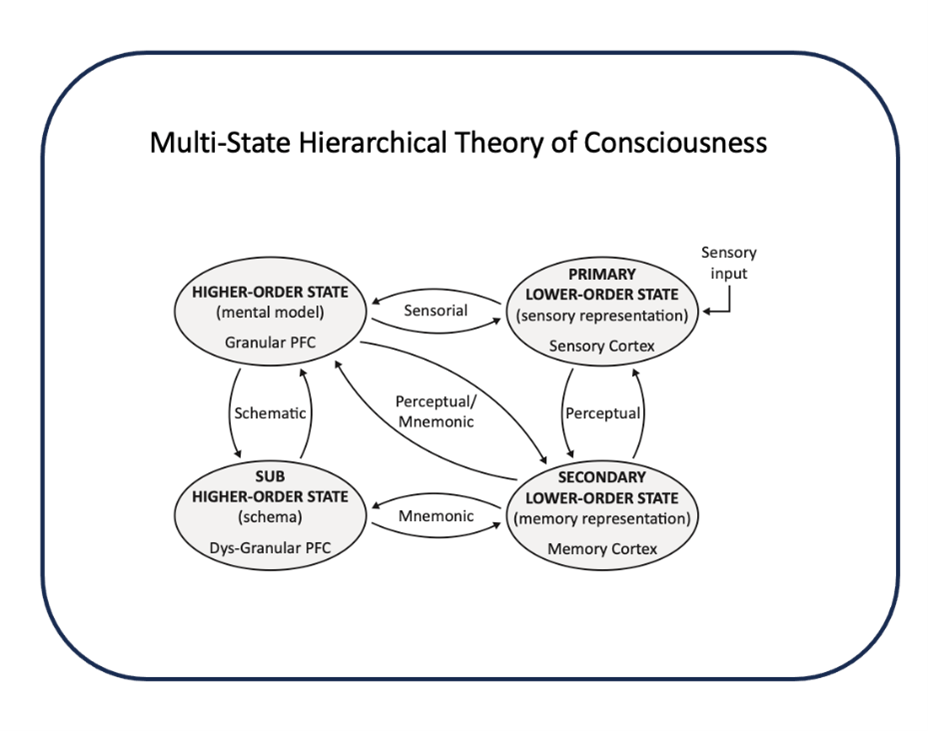
What are the main implications of this framework? Will it help us to understand consciousness?
I am not trying to solve the problem of consciousness – I don’t think we are ready for that yet. But I do believe that more rigorous appreciation of the anatomical connectivity underlying the various theories would go a long way towards shoring them up or weakening their foundation.
Also, a more rigorous conceptual approach would be helpful. Consciousness is often treated as a singular kind of state. But it is not. For example, Endel Tulving has proposed a partition of autonoetic (self-knowing), noetic (fact knowing), and anoetic (non-knowing) consciousness based on episodic, semantic, and procedural memory respectively. Autonoetic and noetic are straight forward—they are explicitly experienced. But anoetic is more elusive. It refers to vague feelings, such a rightness, confidence, dissonance, tip of the tongue and so on.
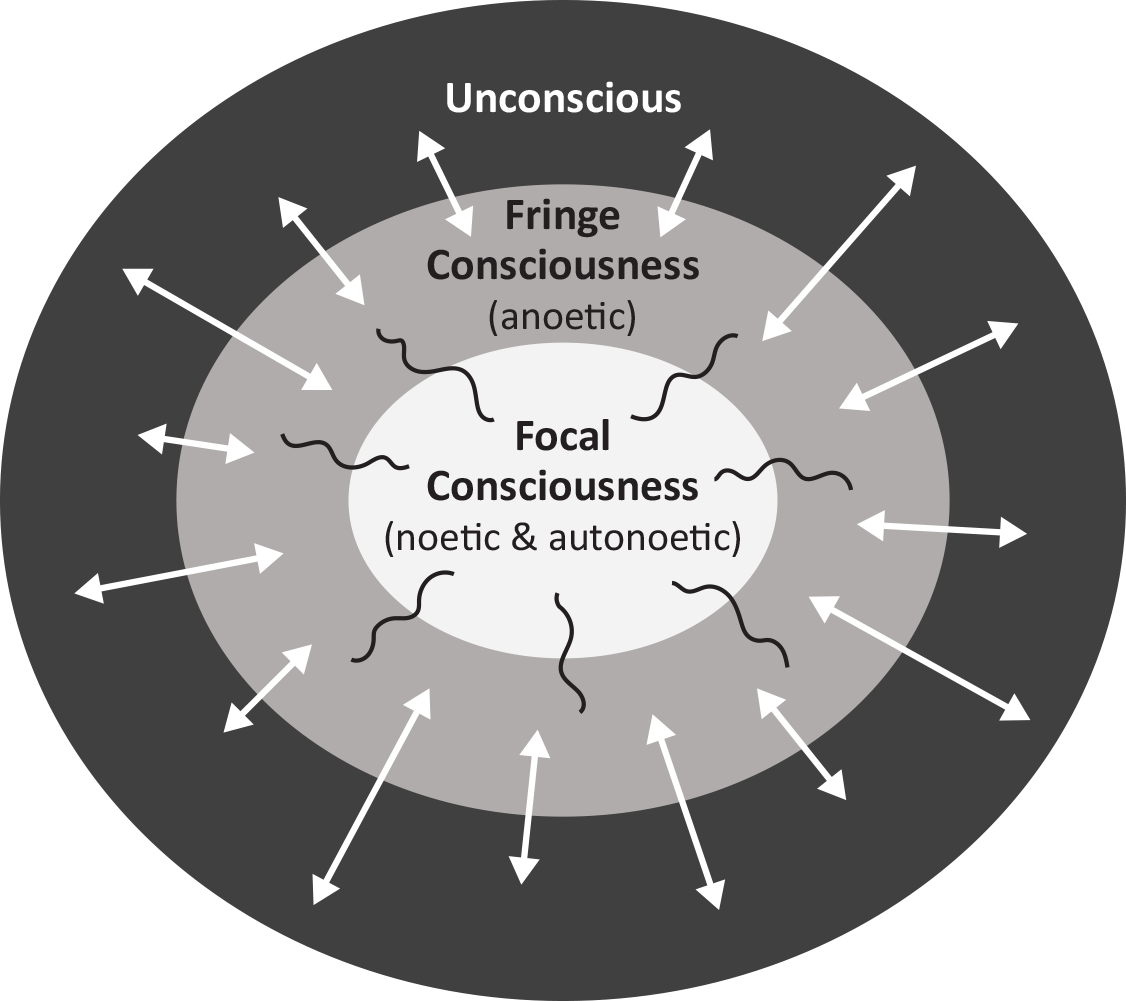
With better understanding of how these explicit and implicit fringe kinds of consciousness are instantiated in the human brain we might be able to reverse engineer speculations about what kinds of consciousness might be present in all mammals, all primates, and only humans.
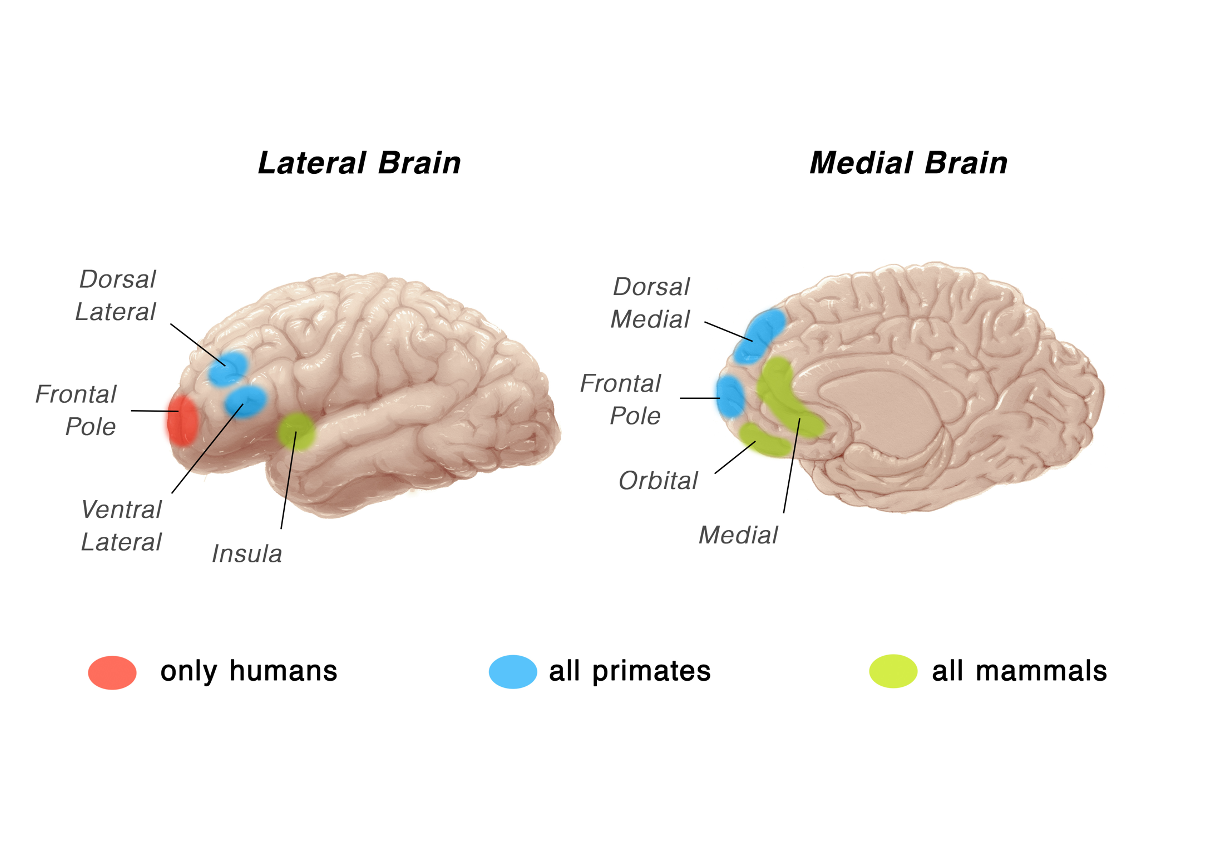
Where can readers find out more?
There is a documentary called “Neuroscience & Emotions: The Life, Work & Music of Dr. Joseph LeDoux” that summaries my journey from my childhood in the Cajun prairie of South Louisiana to neuroscience.
My new book “The Four Realms of Existence: A New Theory of Being Human” is also available to pre-order and is due to be published on 24 November 2023.
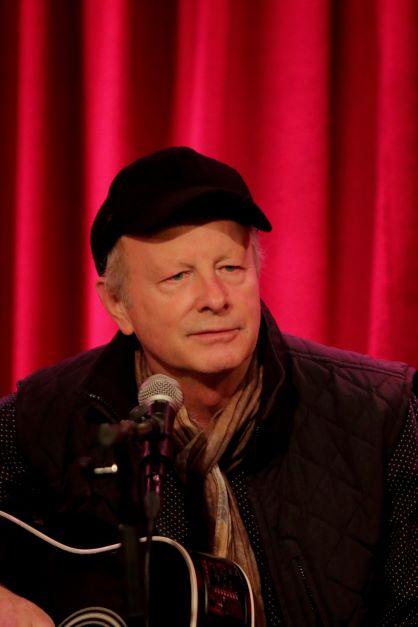
About Professor Joseph LeDoux
Joseph LeDoux is a University Professor and Henry and Lucy Moses Professor of Science at New York University, where he also directs the Emotional Brain Institute. His work is focused on the brain mechanisms of emotion, memory, and consciousness. LeDoux, who has received a number of awards for his research, he is an elected member of the American Academy of Arts and Sciences and the National Academy of Sciences USA. He is also the author of several books, including The Emotional Brain, Synaptic Self, Anxious (2016 APA William James Book Award), and The Deep History of Ourselves (finalist for the 2020 Pen America E.O. Wilson Award for Literary Science Writing). LeDoux is also the 2023 President of the Association for the Scientific Study of Consciousness, as well as the lead singer and songwriter in the rock band, The Amygdaloids, and in the acoustic duo So We Are.
